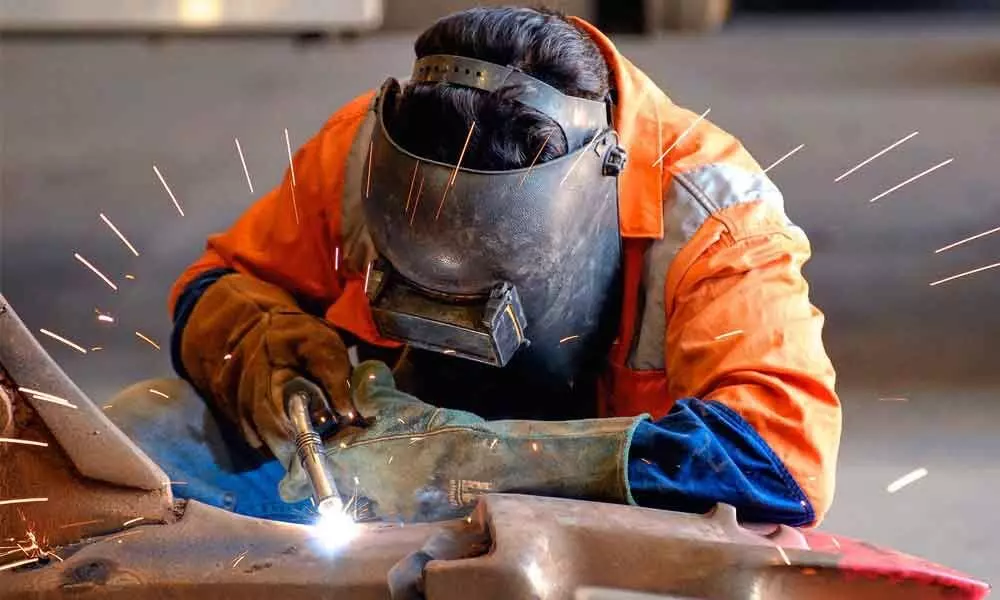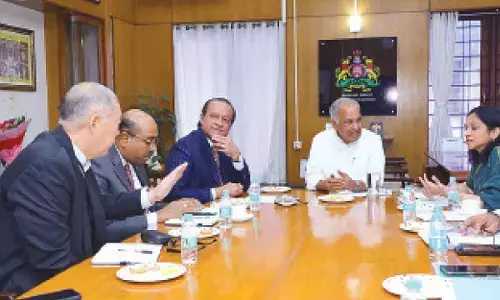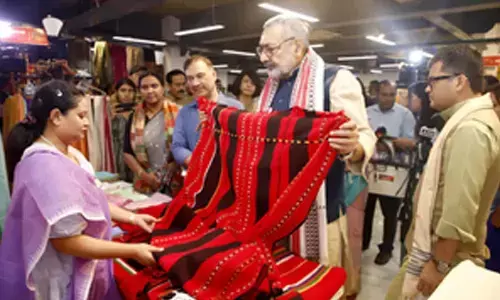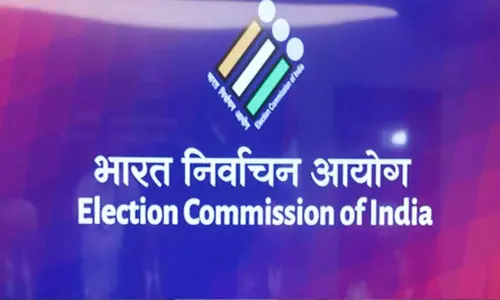Skilled manpower, need of the hour

Skilled manpower, need of the hour
A report of McKinsey Global Institute says that there is a shortage of 8.5 crore skilled workers having higher secondary education and above in the developed countries; while there is an excess of 9.5 crore unskilled workers having primary education in the developed and developing countries
A report of McKinsey Global Institute says that there is a shortage of 8.5 crore skilled workers having higher secondary education and above in the developed countries; while there is an excess of 9.5 crore unskilled workers having primary education in the developed and developing countries.
Obviously, therefore, we can become suppliers of skilled workers to the world if we can impart the required skills to the large numbers of unskilled workers having primary education in our country. The ground reality, however, is desperate. S Srinivasan, President of Indian Institute of Welding, tells us that at least 10,000 welders have been imported into India from China, Russia and East European countries to meet the shortage of welders in India. On the one hand, we are thinking of becoming skill suppliers to the world; on the other, we are unable to even meet our own needs of simple skills such as that of welders.
A 2008 report of the World Bank throws light on the disconnect between "education" and "skill" in India. A survey of primary schools in Karnataka, Madhya Pradesh and Uttar Pradesh found that the teachers were often not present. And, there was little improvement in the educational attainments even if their presence improved. The report notes that there is lack of motivation among the teachers. The teachers can be made to be present but cannot be made to teach just as one can take the horse to the water but cannot make it drink.
The World Bank found that making the teachers accountable to the local Panchayats did not make much difference. A Block President from Uttarakhand told me that even the Secretary to the Block Panchayat did not act as per the directions of the elected President. The Secretary followed the orders of the IAS officers to the neglect of the orders of the elected President. Therefore, making the teachers "accountable" to the Panchayat without giving the Panchayats the power to appoint and remove the teachers will be ineffective.
The Ministry of Education (MOE) has promulgated a New Education Policy to repair the situation. A programme named "Equip" or "'Education Quality Upgradation and Inclusion Programme" has been launched with the objective to equip the students to capture the emerging opportunities by skilling them. However, six of the ten points in this programme are mere slogans: (1) Towards global best teaching process; (2) Promoting excellence; (3) Assessment; (4) Accreditation and ranking systems; (5) Promotion of research and innovation; and (6) Employability and entrepreneurship. Two points would provide more money to the existing inefficient teachers: (7) Strategies for expanding access; and (8) Financing higher education. The ninth point is "Using technology for better reach and internationalisation."
The World Bank has already informed us that improving attendance of teachers by installing biometric attendance does not improve the standard of education. The same applies to newer technologies like smart classes and online learning. The tenth and the most important point is "Governance reforms." A close reading of the description says, "Introduce governance reforms in higher education for well-administered campuses."
The governance reforms, therefore, are aimed to provide autonomy to well-run government educational institutions which is a step in the right direction. However, that does nothing to help improve the skills of our primary-secondary educated students like the welders that are required by the global economy.
The Prime Minister has created a separate Ministry of Skill Development and Entrepreneurship (MSDE), perhaps, to bypass the existing education establishment and find another route to skill India. However, the budget of MSDE was a meagre Rs 3k crore against the budget for Ministry of Education being Rs 99k crore in 2020-21. That is like dousing a forest fire with 3 buckets of water. Further, MSDE also is not interested in skilling welders.
It is focused on high-end skilling. It has entered into agreements with Amazon, Google, Adani, Uber, Maruti and Microsoft, which is a good thing. But what about meeting the global shortage of the 8.5 crore jobs of nurses, teachers, physiotherapists, translators and the like? Perhaps the sons and daughters of the officers of the MSDE do not aspire to become welders; hence MSDE is focused on high-end skilling with Amazon and Microsoft. As the result, skill development is on the backburner.
Many countries across the world, and many States in our country have recognised that it is impossible to reform the government education system. They have made programmes to provide vouchers to the students with which the students can pay fees of the school of their choice. A study by Centre of Civil Society says that a specified amount out of the fee paid by students to school of their choice is reimbursed by the government in Hong Kong. A fee of Rs 550 to Rs 1,100 per month is paid directly by the government to the school of choice of the student in certain provinces of Pakistan. It was found here that the dropout rate reduced, and the learning of mathematics improved. Similar arrangement has been made in Philippines.
Andhra Pradesh and Delhi Shahdara implemented similar programmes and found an improvement in teaching of English and mathematics. A similar programme in Odisha has led to increase of passing student rate from 64 to 75 percent. These experiences indicate that the students are willing to learn if the teachers are willing to teach; and the teachers are willing to teach only if their salaries are somehow linked to their teaching performance. We can see before our eyes that private teachers drawing a salary of Rs 6,000 per month are getting better results than government teachers drawing a salary of Rs 60,000 per month.
One reason of this differential is that no fee is to be paid in government schools hence poorer people send their children there while the better-off people send their children to private schools. Needless to say, the government schools will be absolved of this handicap in the voucher system because then the poor and rich students — both will be equally enabled to enrol in government- or private schools.
Skilling our students requires a surgery of MOE. The government must reduce the budget of government schools by one-half and pay out the other half to the school of the choice of the student. The teachers will then take interest in teaching because they will not get the one-half pay out that will come through the student if they do not teach.
The government teachers will also be saved from teaching only the poor students. Our Constitutional mandate of "Welfare State" will then be truly oriented to the welfare of the students and not the welfare of the teachers. Then we will be able to supply not only welders but also software programmers to the world.
(The writer is formerly Professor of Economics at IIM, Bengaluru)








